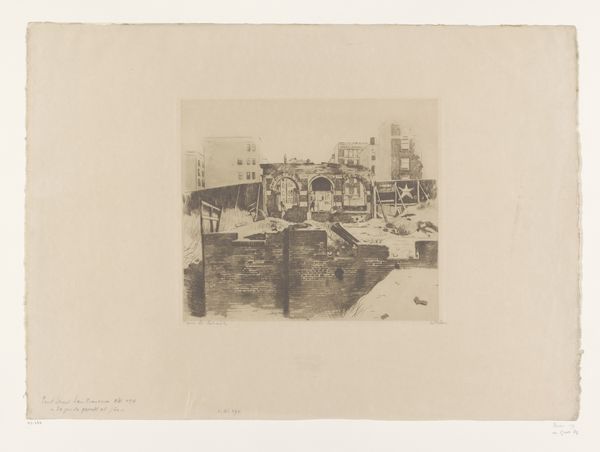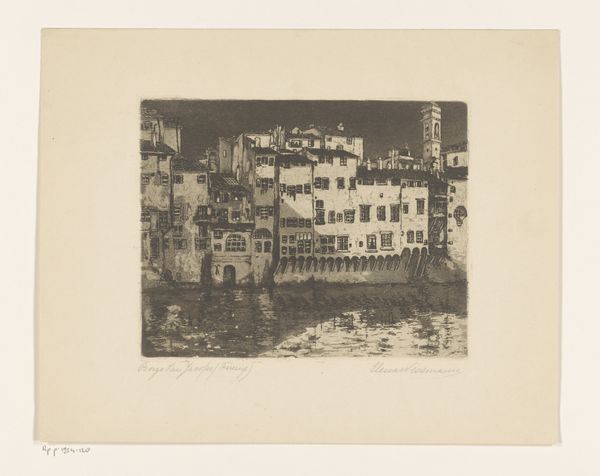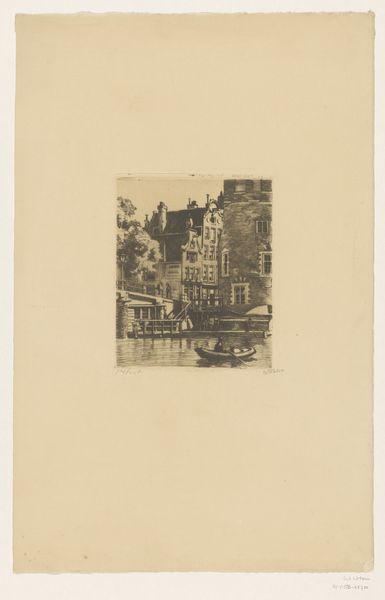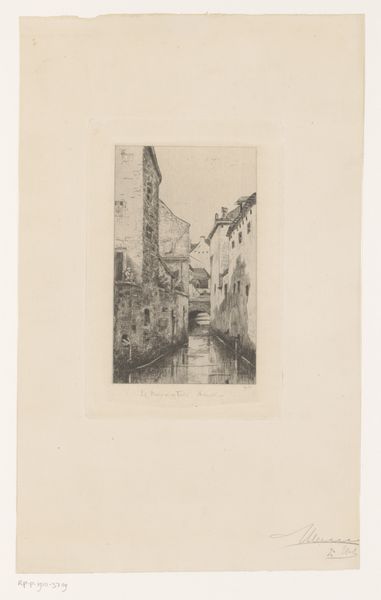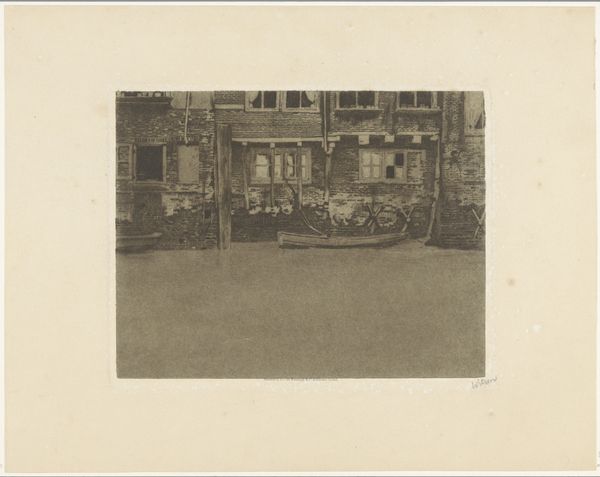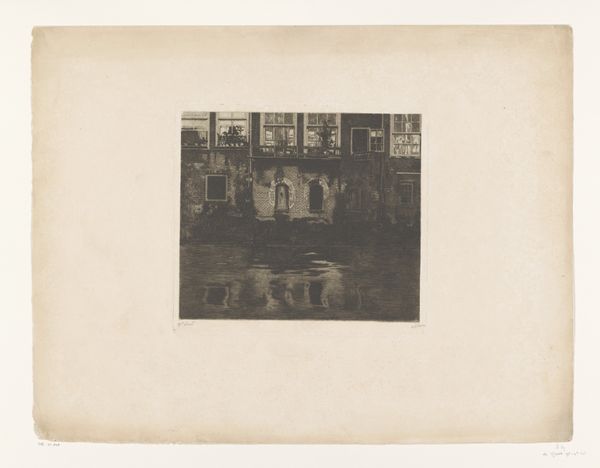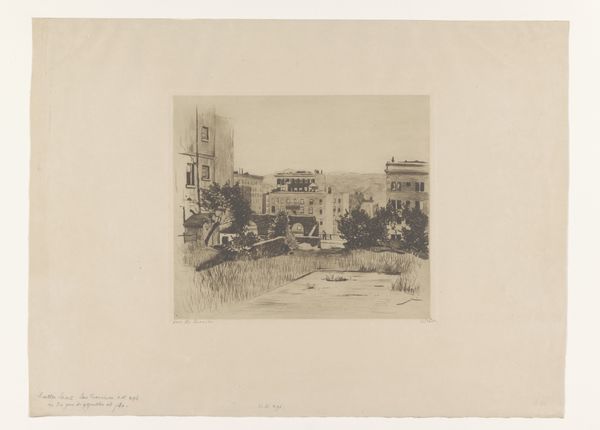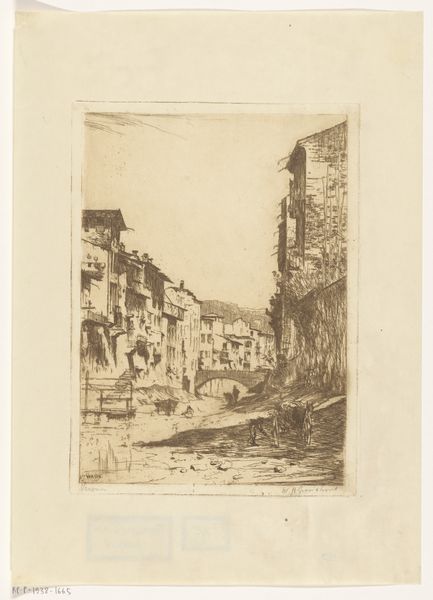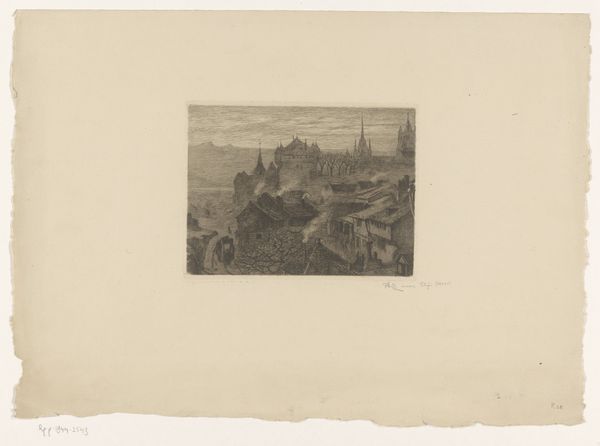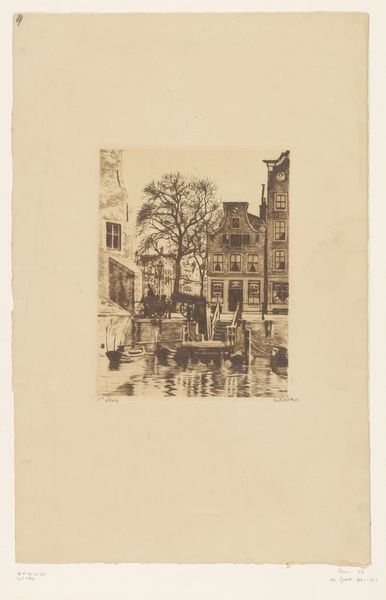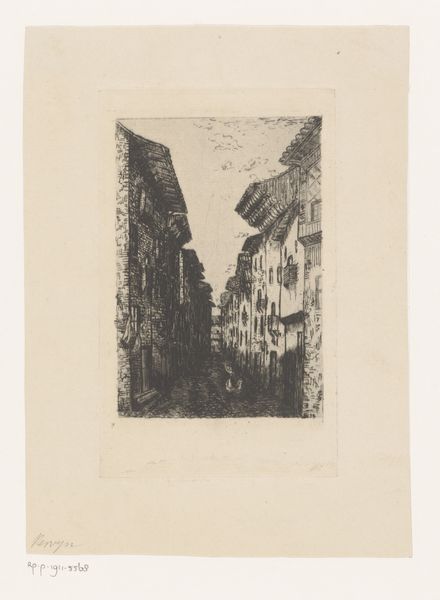
Dimensions: height 279 mm, width 307 mm
Copyright: Rijks Museum: Open Domain
Editor: Here we have Willem Witsen’s etching from 1897, "Gezicht op de Oudezijds Kolk in Amsterdam.” It gives off a somewhat somber, even mysterious, mood. What can you tell me about it? Curator: Well, looking at this image, I think it’s important to consider how Witsen's print intersects with the socio-political landscape of Amsterdam at the fin de siècle. Think about the rapid urbanization occurring at the time and how it impacted different social classes. How do you see this reflected in the stark contrasts and reflections in the water? Editor: I see what you mean. There's a clear division, the architecture reflecting on the water. Was Witsen trying to make a statement about this division? Curator: Possibly. The canal isn't just water, it is acting like a mirror that showcases a fractured society. Who benefitted from the expansion, and who was left behind, quite literally, in the shadows? Witsen, like many artists, documented a city undergoing massive changes, reflecting those power dynamics. What feelings does the piece evoke in you? Editor: Thinking about it now, it makes me feel uneasy, not just because of the darkness, but because of who might be missing from this picture. Curator: Precisely. The absence of certain people or perspectives in a landscape can be as significant as what is shown. By engaging with art like this, we start critical conversations about history and our present. Editor: This has totally changed my initial understanding. I was only thinking about the visual aspect. I appreciate you opening my eyes to the bigger picture here. Curator: That is the purpose of contextualization! I am glad to help navigate art’s ability to communicate, not just beauty, but truth.
Comments
No comments
Be the first to comment and join the conversation on the ultimate creative platform.
